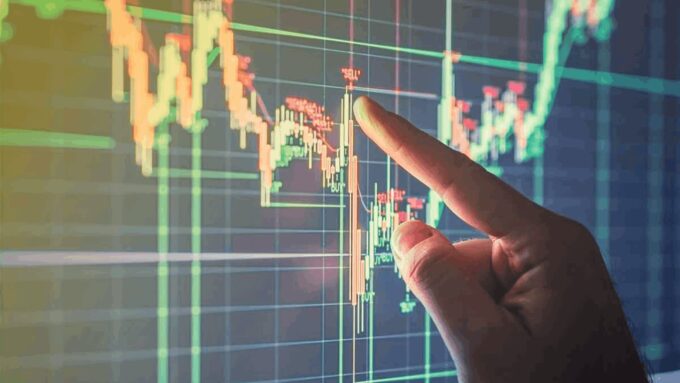In today’s rapidly evolving digital era, cryptocurrency trading stands at the forefront of modern financial endeavors. Gone are the days when currencies were only tangible bills or coins. Now, digital coins like “Bitcoin” and “Ethereum” are not just buzzwords but have integrated themselves into everyday discussions.
However, the labyrinth of cryptocurrency isn’t just about buying or selling; it delves deep into patterns, predictions, and strategies. A significant aspect of this is the intricate candlestick charts, which, for beginners, can be an intimidating vista. But fear not! Together, let’s peel back the layers and bring clarity to the intricate world of cryptocurrency trading.
What Are Cryptocurrencies?
At its core, cryptocurrencies are an innovative form of digital money. They function using cryptographic methods, ensuring transactional security without intermediaries. Traditional currencies depend upon centralized systems like banks or governments for validation and issuance.
Cryptocurrencies challenge this norm by thriving on decentralized technologies, primarily blockchain. Bitcoin, conceptualized by the enigmatic figure Satoshi Nakamoto, set the stage in 2009. Post its inception, the digital currency world witnessed an influx of coins, including Ethereum, Litecoin, and Ripple, each bringing unique features and furthering the transformation of the financial landscape.
Basics of Cryptocurrency Trading

Source: forbes.com
Imagine a bustling marketplace, but instead of goods, digital currencies are exchanged. This is the essence of crypto trading. At its most fundamental level, it involves buying cryptocurrencies when prices are low and selling when they rise.
Central to this ecosystem are cryptocurrency exchanges—platforms akin to stock markets where these digital assets are bought and sold. However, it isn’t just about hunches; there’s a science behind it. Just as stock traders analyze market trends and data, crypto traders use technical analysis. This analytical method evaluates past market data to forecast future price trajectories as you can witness at (http://traders-ai.co/).
What Are Candlestick Charts?
Dipping into the annals of history, candlestick charts trace their origins to 17th-century Japanese rice traders. These charts, more than just visual aids, encapsulate a plethora of information. Each candlestick represents a specific time frame and paints a picture of the price’s journey within that period, detailing the opening, closing, peak, and lowest points.
The beauty of the candlestick lies in its design—a central ‘body’ showcasing price range between opening and closing, and the ‘wicks’ representing the highs and lows. Given the information density they offer, it’s no wonder they’re an essential tool in a trader’s arsenal, especially in the crypto realm.
Reading Candlestick Patterns

Source: tradenation.com
The language of candlesticks is rich and varied. Various patterns speak to market sentiments, guiding traders in their decisions. Take the ‘Doji’, for instance. It’s akin to a pause in a conversation, signaling uncertainty in the market. Then there’s the ‘Hammer’, a beacon of hope in downtrends, hinting at a potential bullish reversal.
In contrast, the ‘Shooting Star‘ serves as a warning, indicating bearish sentiments. Understanding these and many more patterns equips traders with a predictive edge. Imagine observing a series of bullish patterns on Bitcoin’s chart; it could very well be an early alert of an impending upward swing.
Understanding Bullish and Bearish Signals
Markets, like the oceans, have tides. In trading terms, these are bullish (rising) and bearish (falling) trends. Candlestick charts offer a window into these market moods. Patterns such as the ‘Bullish Engulfing’ are like green lights, indicating potential price ascents. Conversely, the ‘Bearish Hanging Man’ serves as a cautionary signal. However, the world of trading is seldom black and white. A signal, no matter how strong, is not an absolute prophecy. Hence, it’s crucial for traders to corroborate these signals with other technical indicators, ensuring a holistic decision-making approach.
Candlestick Chart Analysis Tools
In the world of trading, candlestick charts are akin to compasses, and analysis tools amplify their utility. Platforms like Binance or Coinbase are not just trading arenas; they come equipped with powerful analytical tools.
Whether you’re employing basic techniques like moving averages, which show price trends over specific periods or diving deep with Fibonacci retracement to identify potential support and resistance levels, these tools are invaluable. Engaging with them effectively can be the difference between a successful trade and a missed opportunity.
Risk Management Strategies

Source: nadex.com
Navigating the tempestuous waters of cryptocurrency requires a sound risk compass. Owing to its inherent volatility, sharp and unexpected price shifts are commonplace in the crypto world. Implementing strategies such as stop-loss orders, which essentially put a cap on potential losses by automatically triggering a sale at a predetermined price, can be a lifesaver. Another cornerstone is position sizing, ensuring you never bite off more than you can chew by controlling the amount invested in every trade. As with any journey, having clear, achievable goals, aligned with one’s risk threshold, ensures a smoother voyage.
Emotional Discipline in Trading
Cryptocurrency markets can be emotionally charged arenas. The exhilaration of a bullish breakout or the anxiety accompanying a bearish spiral can easily steer judgments astray. Such emotional roller coasters often culminate in impulsive decisions, with traders either chasing unrealistic gains or panicking during downturns.
Emotional fortitude, thus, is as crucial as any strategy. Simple acts, like distancing oneself during tumultuous market hours or incorporating mindfulness practices like meditation, can fortify one’s emotional resilience.
Trading Strategies for Beginners

Source: tokenmetrics.com
Embarking on the crypto trading voyage can be daunting for novices. However, certain strategies simplify this journey. The concept of ‘Hodling’, an intentional misspelling of “holding”, champions the idea of long-term investment, urging traders to weather the market’s highs and lows.
On the other hand, dollar-cost averaging advocates for periodic investments, allowing traders to build a portfolio over time without fretting over market timing. Both these strategies, while simple, can set a solid foundation for budding traders.
Ongoing Learning and Resources
The cryptocurrency domain is ever-evolving. New technologies, coins, and market dynamics constantly redefine the landscape. Staying updated is non-negotiable. Books such as “Mastering Bitcoin” offer deep dives into the crypto universe, while platforms like Coursera cater to structured learning.
Moreover, online communities, such as Reddit’s r/cryptocurrency, not only provide real-time updates but foster discussions, debates, and knowledge sharing. The crypto marathon rewards those who continuously upgrade themselves.
Conclusion
The enthralling world of cryptocurrency trading, with its myriad patterns, strategies, and emotions, offers boundless opportunities. The linchpin to success, however, is knowledge. A profound understanding of tools like candlestick charts can be the North Star guiding traders in this digital odyssey. Learn who is the biggest investor in cryptocurrency.
As you contemplate diving into this realm, let adaptability and continuous learning be your trusted companions. And remember, while self-reliance is commendable, there’s no harm in seeking expert counsel. The crypto horizon beckons, and may your trades always be prosperous!







